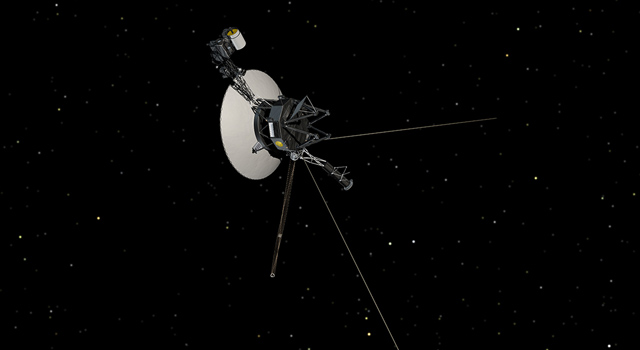News | November 11, 1988
Voyager 2 Change-of-course Maneuver Successful

NASA's Voyager 2 spacecraft, now less than year away from its encounter with the planet Neptune, successfully completed critical change-of-course maneuver today that will bring Voyager 10,000 kilometers (6,200 miles) closer to the planet during its Neptune flyby next summer.
Voyager 2, operated by the Jet Propulsion Laboratory (JPL) in Pasadena, Calif., will pass about 5,000 kilometers (3,000 miles) from Neptune's cloudtops at 9 p.m. Pacific Daylight Time on Aug. 24, 1989. Five hours later, the spacecraft will also fly about 38,000 kilometers (24,000 miles) from Neptune's moon Triton, which may harbor lakes of liquid nitrogen.
Responding to commands radioed from Earth, Voyager 2 fired its hydrazine thrusters for 3 minutes and 29 seconds, beginning at 6:55 a.m. Pacific Standard Time today. Radio signals received from Voyager at JPL indicated that the maneuver was properly executed, according to Dr. Lanny Miller, manager of the Voyager flight engineering office.
Voyager 2, now 4.2 billion kilometers (2.6 billion miles) from Earth, is controlled by radio signals sent from giant dish antennas owned by NASA in California, Spain and Australia. Traveling at the speed of light (186,000 miles per second), the signals take nearly four hours to reach the spacecraft.
The Neptune flyby will be Voyager 2's fourth and final planetary encounter before the spacecraft heads out of the solar system to explore interstellar space. Voyager 2 was launched in 1977 along with twin spacecraft, Voyager 1. Voyager 1 completed flybys of Jupiter and Saturn and their moons, and is headed out of the solar system. After completing its Jupiter and Saturn encounters, Voyager 2 was sent on to explore Uranus, which it flew past in January 1986, and Neptune. The spacecraft is now 414.7 million kilometers (257.7 million miles) from Neptune.
The Voyager project is managed by JPL for NASA's Office of Space Science and Applications.
